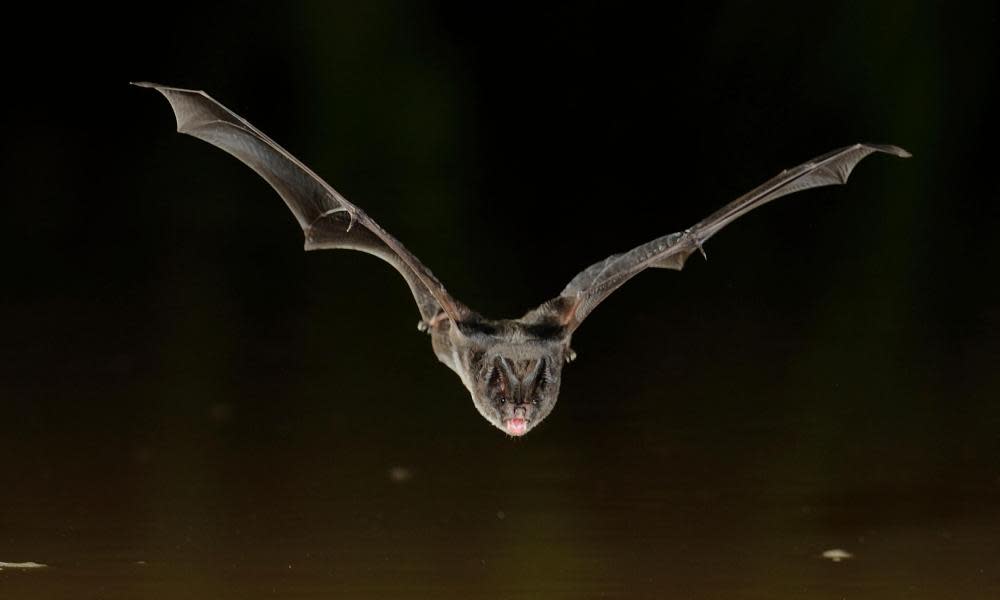Norfolk dual carriageway plan would ‘wreck’ rare bat colony, experts say

The centre of an “exceptional” super-colony of one of Britain’s most endangered bats has been discovered in the path of a proposed road across a chalk stream.
A planning application for the Western Link dual carriageway near Norwich is expected to be submitted this summer despite researchers identifying the UK’s largest known colony of barbastelle bats in the threatened Wensum valley woodlands.
Scientists have found 94 individual roost trees for barbastelles, two-thirds of which are in within the 1.6-mile (2.5km) “impact zone” of the proposed 3.9-mile road.
A series of linked colonies, including one of more than 105 individuals, has been found close to the proposed Western Link across the Wensum, a chalk river that is an internationally designated special area of conservation (SAC). One colony lives directly in the path of the road.
“This is a really unique hotspot. It’s by far the biggest and most important area we know of for barbastelle in the UK,” said Dr Charlotte Packman, a conservation scientist for Norfolk Wildlife Trust who has spent more than a decade studying the species.
“Barbastelles are great indicator species of wider ecological health because they need an extensive area of good habitat. A dual carriageway right through that is just going to wreck it.”
Natural England, the government’s conservation watchdog, has added the Wensum woodlands to its list of sites to be considered for designation as a site of special scientific interest. Other SSSIs have been designated for barbastelle colonies of 20 to 30 individuals.
Related: A wing and a prayer: is there hope for Britain’s loneliest bat?
But if Natural England were to make the area an SSSI it could find itself in conflict with the Department for Transport, which must decide whether to fund 85% of the £251m Western Link, a long-held priority for Conservative-controlled Norfolk county council.
According to Packman, whose research on barbastelles is being submitted to scientific journals, the rare, woodland-dwelling species is a “landscape” bat that requires an unusually large foraging areas to prosper.
When Packman studied barbastelle colonies close to Broadland Northway, another dual carriageway nearby which was completed in 2018, she found the two barbastelle colonies within 2.5km of the road had disappeared. European research suggests that barbastelles are particularly vulnerable to colliding with vehicles.
Norfolk county council wants to build the Western Link to take traffic off local roads and away from villages, reduce journey times and enable economic growth. It says the road will also shorten response times for many ambulances travelling to the nearby Norfolk & Norwich University hospital.
The hospital and local business leaders have previously argued in favour of the road, which is opposed by Labour and Green groups in the council and environmental charities.
Norfolk Wildlife Trust has highlighted what it says are inadequate bat surveys carried out for the council. The first survey in 2019 was on just one night, and it was only in 2021 that surveyors undertook trapping and discovered a barbastelle colony on the proposed route. Where Packman and local experts and volunteers found more than 105 barbastelles, council surveyors reported only 27.
“They did lousy surveys,” said Packman. “It should’ve been screamingly obvious that there was likely to be a barbastelle colony there and it was missed in 2019 and 2020 and the council ploughed on regardless with their road proposals. It should’ve been evident that this wasn’t a viable road at this location.”
According to Packman, the council is focused on the “direct footprint of what’s going to be flattened by the road corridor. What they are not thinking about is that there is now really good scientific evidence that the impact of a road [on barbastelles] stretches far, far beyond the road corridor”.
A spokesperson for Norfolk county council said: “We have carried out extensive bat surveys over four years and as a result have a good understanding of the presence of this protected bat species in the area around the proposed route, and we’re taking account of this in our design and mitigation measures. We’ll continue to take advice from Natural England and bat specialists as we develop our proposals.”
A green bridge for walkers and wildlife has been added to the Western Link plans, alongside mitigation measures including underpasses, tree-planting to guide bats and other wildlife to crossing points, improving woods and creating new woodland in the Wensum valley.
Monitoring of seven much-criticised “bat bridges” over the nearby Broadland Northway dual carriageway found that four safely guided a majority of bats spotted over the road. But the numbers spotted were small and critics say the council’s data does not include how many bats flew these routes before the road was built.
According to the council, the two barbastelle colonies not found after the road opened may not have disappeared, because surveyors were unable to gain access to one of the buildings where they had previously been found.
The spokesperson said: “There has also been significant housing and business development to the north of Norwich over the same time period that the Broadland Northway was constructed and became operational, so it is not possible to attribute any change in bat populations or behaviour across a wider area to one single factor.”

 Yahoo News
Yahoo News 
